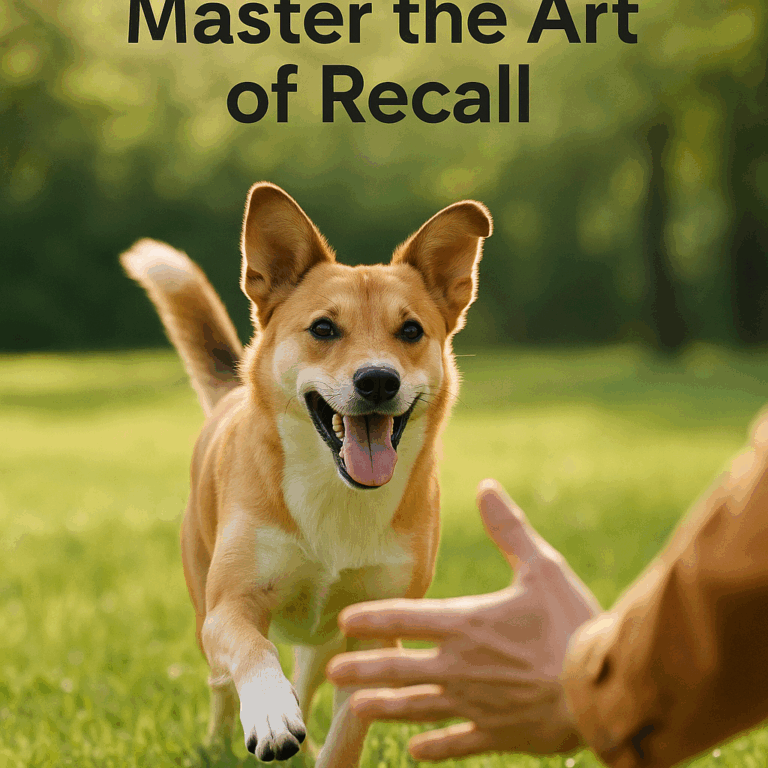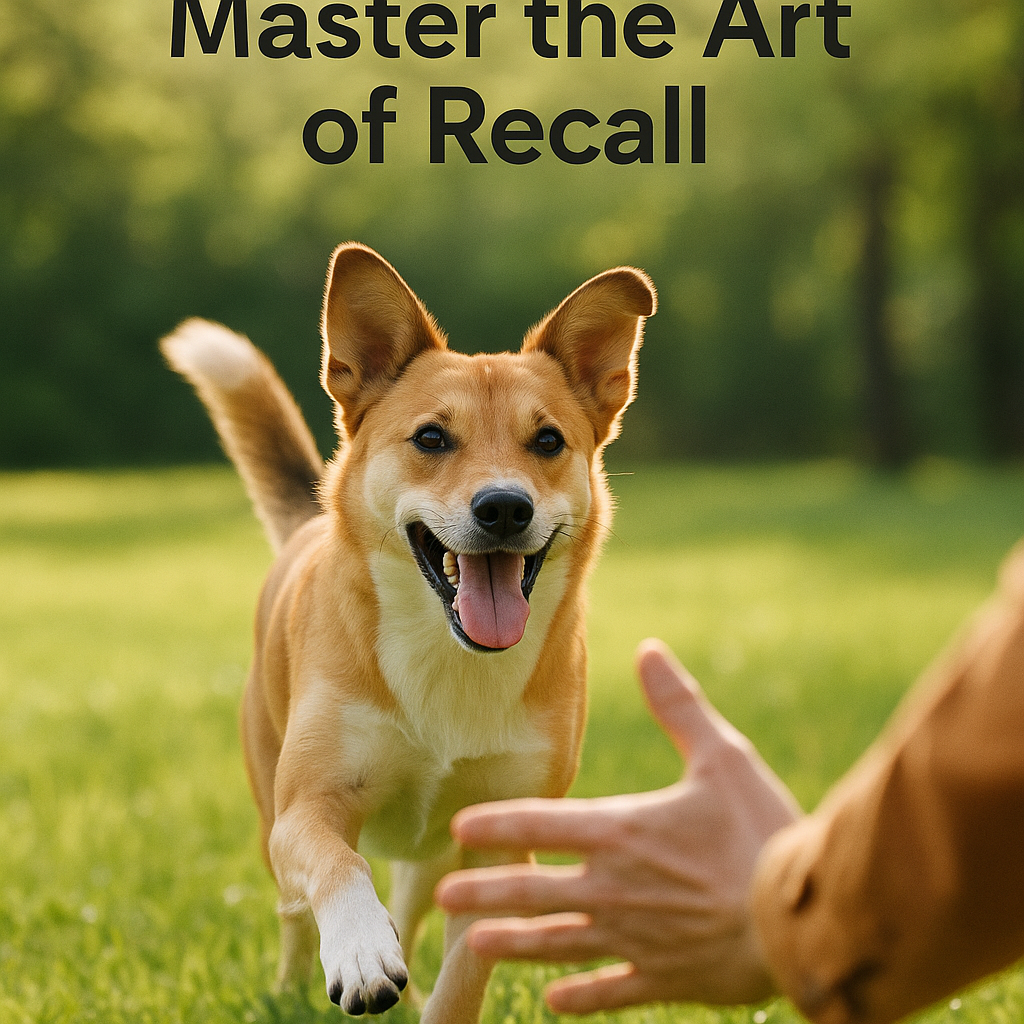Unlocking the Magic of Recall: Bringing Your Dog Back Every Time
Imagine this: you’re at the park, the sun is shining, your dog has that happy “I’m free!” sparkle in their eyes, and suddenly, they sprint off toward a squirrel—or that suspiciously delicious piece of dropped pizza. You call their name, but they’re busy living their best life, completely ignoring you. Sound familiar? Recall, or the ability to come back when called, can feel like an elusive superpower many dog owners strive to master. But trust me, with the right techniques and a bit of patience, your dog’s recall game will become as reliable as your morning coffee routine.
Recall isn’t just a fun party trick—it’s a vital skill in pet care that ensures your dog’s safety. Whether it’s crossing a street, visiting a busy trail, or encountering unknown animals, the ability to call your dog back can prevent accidents, lost pets, or stressful emergencies. Plus, strong recall builds trust and communication, strengthening the bond between you and your furry companion.
Why Dogs Sometimes Say “Nope” to Coming Back
First, let’s talk about why puppies or adult dogs ignore the recall command. It’s not because they’re being stubborn or trying to test your patience. Usually, it boils down to these few reasons:

– **Distractions:** The world is bursting with smells, sights, and sounds far more exciting than your voice calling them. Squirrels, other dogs, kids on skateboards—they all compete for that precious puppy attention.
– **Lack of Motivation:** If coming back isn’t more rewarding than what they’re currently doing, why would they? You need to make “come” the best invitation in the world.
– **Fear or Anxiety:** Sometimes dogs hesitate because they’ve learned that coming back means an end to the fun or something unpleasant (like a bath or vet trip).
– **No Clear Communication:** If your recall cue is inconsistent, or your dog hasn’t fully grasped what you expect, confusion reigns.
Understanding why your dog might resist recall helps tailor your training approach to meet their needs.
Gearing Up with the Right Tools: Dog Collar and ID Tag
Before diving into recall training, make sure your pup’s safety gear is up to snuff. A sturdy dog collar with a clear, up-to-date ID tag is a non-negotiable part of pet care. Sometimes, despite the best training efforts, dogs can slip away or get too distracted. An ID tag acts as that crucial safety net, helping reunite you with your adventurous friend if they stray.
Think of your dog collar as the trusty harness for your training journey. Choose one that’s comfortable and fits well—not too tight, not too loose. If your dog prefers harnesses, they work too, but always have that ID tag front and center. Bonus points if you opt for tech-savvy ID tags with GPS tracking or quick-profile scanning capabilities, blending safety with modern convenience.
Crafting an Irresistible Recall
Here’s the magic recipe to transform “come here” from a whisper in the wind to your dog’s favorite command:
1. **Pick a Happy Cue Word:** “Come,” “Here,” or even a unique whistle—choose something cheerful and consistent. Avoid using your dog’s name alone to prevent confusion.
2. **Start Super Close, Super Easy:** Especially with puppies, start indoors or a fenced yard where distractions are low. Say your cue in an excited voice, and when your puppy comes, celebrate like they just won a doggy Oscar. Lots of praise, treats, belly rubs—anything to make their brain scream, “That felt amazing!”
3. **Use High-Value Rewards:** We’re talking about treats your dog would trade their favorite toy for. Think tiny pieces of chicken, cheese, or specially designed training treats. The better the reward, the more motivated your pup will be.
4. **Make it a Game:** Recall training doesn’t have to be stiff. Turn it into a joyful game of hide-and-seek or tag. Dogs love to play, and associating recall with fun amps up their engagement.
5. **Practice, Practice, Practice:** Short but frequent sessions beat occasional marathon drills. Sprinkle in recall during walks or playtime, rewarding your dog whenever they check in.
Handling Mishaps with Patience and Positivity
Setbacks happen; your dog might bolt past you one day, old habits rearing their head. Resist the urge to scold—they’re not being naughty, just overwhelmed or distracted. Instead, take a breath, regroup, and remind yourself that every training journey has bumps.
If your dog runs away during off-leash time, avoid chasing. Chasing turns recall into a game of tag where you’re always “it”—and that’s no fun for your pup. Instead, turn around, lose interest, or use their favorite treat or toy as a lure. The goal is to make returning more enticing than the wild adventure they’re on.
The Long Game: Building Recall as a Lifelong Skill
Recall isn’t something you “train once and forget.” Life throws different distractions and challenges your dog’s way as they grow and explore. A puppy’s recall in your living room is worlds apart from a teenage dog’s at a crowded dog park or wilderness trail. Keep up regular practice, adjusting rewards and distractions as your dog matures.
Also, layering in a reliable recall helps you confidently expand your dog’s world—more off-leash play, hikes, and social adventures—all while knowing you’ve woven safety into those experiences.
As famed dog trainer Karen Pryor wisely said, “Training is not about forcing behavior but about teaching your dog what you want and rewarding them when they do it.” Recall is a loving conversation on a whole new level, where your dog chooses you—again and again—because they know coming back equals fun and connection.
Every Dog Deserves a Reliable Recall
Every dog, from the clumsiest puppy to the wise old retriever, deserves to have a recall they can rely on. It’s a gift you give your pup that keeps them safe, confident, and connected with you. With a comfy dog collar, a clear ID tag, and a sprinkle of playful, positive training, that elusive recall call transforms from wishful thinking into everyday magic. Now, isn’t that a reason to celebrate with extra belly rubs and a few treats?
Tags: bring dog back, dog obedience, dog recall tips, dog recall training, dog training techniques, effective dog recall, improve dog recall, recall command, reliable dog recall, training off-leash recall